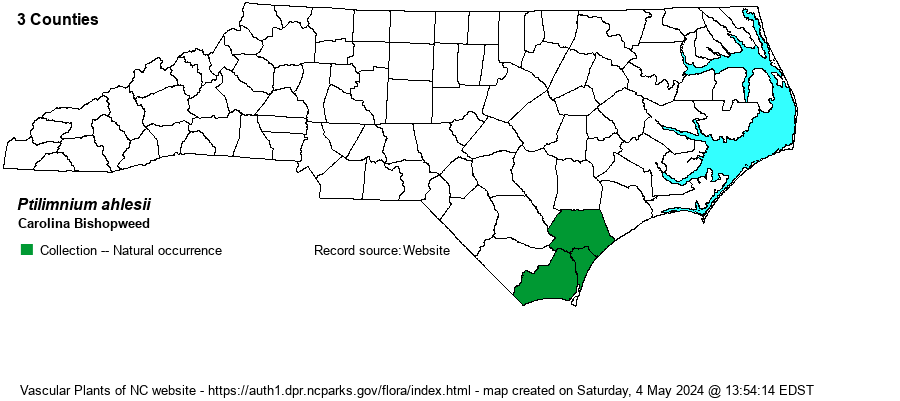| Author | Weakley & G.L. Nesom | |
| Distribution | Limited to the southeastern corner of the state, along the lower Cape Fear River and tributaries. It was recognized many decades ago as a distinct taxon but never formally described until 2004.
This species has a very limited range from southeastern NC to eastern GA.
| |
| Abundance | The NCNHP database has five records, of which only two appear extant. It is very rare to rare in this limited area of the state. This is a Significantly Rare species, despite it being Globally a G1 species. It deserves to be Federally and State Endangered. | |
| Habitat | This species seems to be limited to tidal freshwater marshes in NC, and only along the Cape Fear, Brunswick, and Northeast Cape Fear rivers (and tributaries). | |
| Phenology | Blooms in May and June, and fruits from late May to July. | |
| Identification | This species is very similar to the widespread and common P. capillaceum. Both are erect species of medium height, to about 1-2 feet tall. Each has alternate leaves that are pinnately divided into a great number of extremely thin (filiform) leaf segments, 15 to 50 or more. In this species, the leaf segments are from 15-30 on average, as opposed to 50 or more segments in P. capillaceum. The linear segments in this species are somewhat wider, but still only 0.5-1.9 mm wide, as opposed to under 0.5 mm wide in the common species. The numerous umbels of small white flowers in this species usually have 5-7 umbellets per umbel, and only 5-7 flowers per umbellet; as opposed to usually 10 or more umbellets per umbel and usually 10 or more flowers per umbellet in P. capillaceum, meaning that this rare species is less floriferous, with smaller umbels and fewer flowers. Perhaps most importantly, this species flowers from May to early June, whereas the common species flowers from June to August, and fruits from July to September (much later than in the rare species). Of course, P. capillaceum can and probably does occur in the same area as P. ahlesii, so when you are collecting or photographing these plants in the "Cape Fear Marshes" area, be extremely careful in the identification. | |
| Taxonomic Comments | RAB (1968) did not include it as a species or variety, and included it within P. capillaceum, saying "Includes P. macrospermum". This species was formally described in 2004.
| |
| Other Common Name(s) | Coastal Bishopweed | |
| State Rank | S1 | |
| Global Rank | G1 | |
| State Status | SR-T | |
| US Status | | |
| USACE-agcp | | |
| USACE-emp | | |

